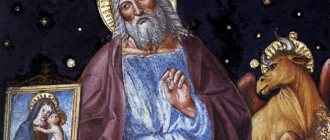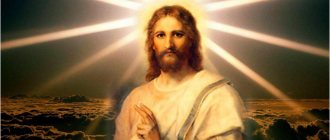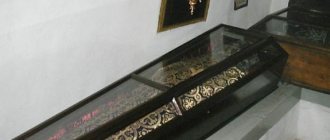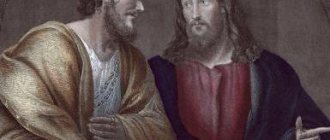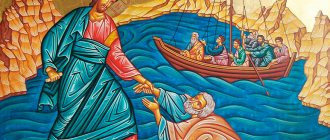Whom does the Church call evangelists?
The Holy Christian Church in its existence is guided by Divine revelation, which is spread through the transmission of Holy Tradition to people.
One of its forms is inspired books. The complete collection of sacred Christian texts, called the Holy Scriptures, is called the Bible. It includes the books of the Old and New Testaments. The central books of the New Testament corpus are the gospels. They talk about the earthly life of Jesus Christ, his miracles, and public service. There are four canonical gospels - Mark, Matthew, Luke and John. They were holy apostles. To the extent that they are the authors of the gospels, the Church calls them holy evangelists. According to the history of the Church, Christ had his closest disciples - the apostles. At first there were twelve, then seventy. The New Testament also speaks of five hundred disciples. The holy evangelists were apostles from twelve to seventy. Thus, the evangelists Matthew and John were among the twelve chosen disciples. Christ even called John His beloved disciple; Luke and Mark believed in Christ as God and the Messiah later, and were one of the seventy apostles.
The life story of each of the evangelists is different, but it can be said that they all worked hard to spread Christian teaching. Almost all the apostles suffered martyrdom and the evangelists were no exception. Only about the Apostle John the Theologian a tradition has been preserved that he did not suffer martyrdom, although he suffered persecution under the Emperor Diocletian.
When did the four evangelists first begin to be depicted?
The earliest depiction of the evangelists, whose figures are identified by a box with four scrolls at the feet of the Savior, is found in the Roman catacombs of St. Mark and Marcellian (up to 340). By the 4th century. include relief images of the evangelists on sarcophagi: in the cathedral of Apt (France) - inscriptions over John and Mark have been preserved; with the image of the Cathedral of the Apostles (Museum of Ancient Arles and Provence); with an allegorical image of the Church-ship with Jesus Christ at the helm and the evangelists-oarsmen, above each there is an inscription with a name (Lateran Museum, Rome; fragment). From the 6th century The evangelists are depicted together with the Mother of God or St. prophet John the Baptist, for example, on the carved plates of the throne (department) of the bishop. Maximian (546–556, Archbishop's Museum, Ravenna). From the same time, images of the evangelists are found in miniature manuscripts: Codex Rossano (Gospel of Mark and Matthew, 6th century, Cathedral Museum, Rossano); Four Gospels of Rabbula (Laurent. Plut. I. 56, 586). One of the earliest images of the symbols of the evangelists - a calf and an angel among swirling clouds - is present in the composition “Myrrh-Bearing Women at the Holy Sepulcher” on a carved ivory plate, around 400 (diptych from the Trivulzio collection, Milan).
Features of Evangelists
Among the four gospels found in the canon of Christian holy books, three are called synoptic and one spiritual.
The Gospels of Mark, Matthew and Luke are similar in composition; they describe some of the same moments from the earthly life of the Savior. The Evangelist John has a text with a different content. He tells more about what was not said by other evangelists. Therefore, his gospel, which seems to be an example of the spirituality of the word, is recognized as the last to be written. The evangelist Matthew wrote his gospel for God's chosen people (the Jews). It is the longest and the main idea of the text was to show Christ as the Messiah whom the Jews were expecting. Evangelist Mark in his work presented all the royal greatness of God. He talks about the miracles of Christ. This text is the shortest and most understandable to ordinary people. Mark wrote his gospel for the Romans, so it was important for him to show the miracles of Christ.
Luke wrote about the salvation of all mankind, pointing to the atoning sacrifice of Christ that he made for all people. It is no coincidence that the last evangelist John was nicknamed the Theologian by the Church. In his gospel one can see the main points of the theology of the Church, the teaching of Christ as God, pre-eternally begotten of the Father.
The holy evangelists made a huge contribution to the spread of Christian preaching through their works. Their gospels are imbued with the grace of the Holy Spirit and will be considered relevant to humanity at all times.
Why do the icons depict an Angel, a lion, a calf and an eagle next to the evangelists?
For a number of ancient Christian writers, a common symbol for all four evangelists were the four mysterious animals, which the prophet. Ezekiel contemplated by the river Chebar (Ezek. 1:5-26). Their faces resembled those of a man, a lion, a calf and an eagle. These images - a man (angel), a lion, a calf and an eagle - became emblems for the evangelists, therefore Christian art, starting from the 5th century, depicts Matthew with a man or an angel (since in the Gospel Matthew emphasizes the especially human and messianic character of Christ); Mark with a lion (in the Gospel Mark depicts Christ's omnipotence and royalty); Luke with a calf (in the Gospel Luke speaks of Christ’s high priesthood, with which the sacrifice of calves was associated); John with an eagle (according to St. Augustine, John “like an eagle soars above the clouds of human weakness”). Around the end of the 16th century. in the paintings of churches, instead of the evangelists, sometimes only their symbols were depicted (for example, the Smolensky Cathedral of the Novodevichy Convent, the Church of the Holy Trinity in Vyazemy).
Does the word "evangelical" have any other meaning?
In some liturgical-canonical monuments, the word “evangelists” apparently denoted the special position of a church reader. Thus, in the Didascalia of the Apostles (3rd century), in the description of the qualities necessary for a candidate for reader, it is said, in particular, that he must “understand that he is fulfilling the ministry of an evangelist.” The word “evangelist” in this meaning is also used in the modern practice of the Orthodox Church, namely in the text of the Liturgy of St. John Chrysostom in the deacon’s address to the serving priest before reading the Gospel: “Bless, O Master, the evangelist (εὐαγγελιστήν)…”.
***
See SYMBOLS OF THE EVANGELISTS
Apostle Luke
The Apostle Luke, according to church writers, was from Antioch. He was a pagan by origin. His name is probably short for the Roman "Lucilius".
Luke does not include himself among the witnesses to the life of Jesus Christ. It is unknown when he converted to Christianity. He is recognized by the Church as “an apostle of the 70.”
It is known that Luke was
a doctor
.
He accompanied the Apostle Paul
on his missionary travels, including to Rome.
After the martyrdom of the Apostle Paul in Rome
, he went to preach in Libya, Achaia, Thebaid and Egypt. In the Greek city of Thebes he died a martyr's death - he was hanged from a tree.
This is interesting: Apostle Luke: evangelist, icon painter, martyr
The first icons of the Blessed Virgin Mary
Theodore Lector
, a writer and historian of the Church of the 6th century, brings to us the tradition that the Evangelist Luke was the first
icon painter
.
He captured the image of the Blessed Virgin Mary.
In the Orthodox tradition, Luke is credited with the authorship of ten
icons of the Blessed Virgin
.
Among them are Hodegetria, Vladimirskaya
(the earliest and one of the most revered in Russia),
Iverskaya (Goalkeeper or Gatekeeper
), miraculous
Feodorovskaya and Tikhvinskaya
.
According to legend, Evangelist Luke is the author of “Nicopea”
- an icon of Byzantine origin revered by Orthodox Christians, as well as the main shrine of Poland -
the Czestochowa Mother of God. The Korsun
(iconographic type of Eleus),
Kyriotissa (
the Blessed Virgin is depicted full-length with the Child in her arms), the miraculous
Kykkos icon
is the main shrine of the island of Cyprus.
This is interesting: What icons of the Most Holy Theotokos did the Apostle Luke paint?
Day of Remembrance
Feast days of St. Luke the Apostle April 22 (May 5), October 18 (31), January 4 (17).
Icon
Material: Wood, gesso, tempera, gold. Dimensions of the icon: height 34 cm, width 22 cm. An image of the writing evangelist Luke with his symbol - the calf. Inv. No. GMPI 2973.DI-439-I. © State Museum of Palekh Art
In his Gospel, Luke paid special attention to the Savior's death on the cross. Therefore, the symbol of the evangelist is Taurus
, sacrificial animal.
Prayer to Evangelist Luke
O holy servant of God, Apostle Luke! Having fought a good fight on earth, you have received in Heaven the crown of righteousness, which the Lord has prepared for all who love Him. In the same way, looking at your holy image, we rejoice at the glorious end of your life and honor your holy memory. You, standing before the Throne of God, accept our prayers and bring them to the All-Merciful God, to forgive us every sin and help us against the wiles of the devil, so that, having been delivered from sorrows, illnesses, troubles and misfortunes and all evil, we will live piously and righteously in the present We will be worthy through your intercession, even though we are unworthy, to see good on the land of the living, glorifying the One in His saints, the glorified God, the Father and the Son and the Holy Spirit, now and forever. Amen.
Apostle Mark
Mark is an apostle from the seventy. In his early youth he became a disciple of Jesus Christ. His family was connected with the first followers of the Savior: he was a relative of the Apostle Barnabas
, in the house
of Mary, mother of Mark
followers of Christ
gathered .
Mark was a direct participant in the gospel events and spoke about them as only an eyewitness could:
“Get up, let's go; Behold, he who betrayed Me has drawn near. And immediately, as He was still speaking, Judas, one of the twelve, came, and with him a multitude of people with swords and staves, from the chief priests and scribes and elders. He who betrayed Him gave them a sign, saying: Whomever I kiss, He is the One; take Him and lead him carefully. And when he came, he immediately approached Him and said: Rabbi! Rabbi! and kissed Him. And they laid their hands on Him and took Him. One of those standing there drew a sword, struck the high priest’s servant and cut off his ear. Then Jesus said to them, “You came out as if against a thief with swords and staves to take Me.” Every day I was with you in the temple and taught, and you did not take Me. But may the Scriptures be fulfilled. Then, leaving Him, everyone fled. One young man, wrapped in a veil over his naked body, followed Him; and the soldiers seized him. But he left the veil and ran away from them naked.” (Mark 14:42-52)
It is likely that this young man was the future author of one of the Gospels, Mark.
Some ancient authors call Mark “fingerless.” The apostle came from the family of Levi. According to legend, after converting to Christianity, Mark himself cut off his thumb so that he would not be forced to perform the duties of a Jewish priest.
Mark was a friend of the Apostle Paul, and in 50 he accompanied him as a servant on his first missionary journey. Subsequently he accompanied the Apostle Barnabas to Cyprus. Helped the Apostle Paul in spreading Christianity among the Romans. From Rome he went to Colossae, where he was with the Apostle Peter. Helped the Apostle Timothy in his ministry in Ephesus.
Mark probably wrote his Gospel in Rome and at the request of Roman Christians. He was based on the words of the Apostle Peter and on his own memories. The Gospel was written after the death of the apostles Peter and Paul, who preached in Rome from 61 to 66.
Mark went to Egypt and founded a Christian church in Alexandria. According to legend, the pagans accused Mark of magic for performing miracles. On the day of the holiday of Serapis, a pagan deity, he was captured and killed by a crowd of pagans.
25
April
63 years old
On this day, the Apostle Mark died as a martyr. Some scientists believe that this happened not in 63, but in 68.
The body of the apostle rested in Alexandria, and in 827 merchants took it to Venice.
Day of Remembrance
April 25 (May 8, new style) is the day of remembrance of St. Apostle Mark.
Icon
Iconography: Mark, the Apostle Dates: XIX century. Second half of the 19th century. Icon painting school or art center: Palekh school of icon painting Material: Wood, gesso, tempera, gold. Dimensions of the icon: height 31 cm, width 22.5 cm. An image of the writing evangelist Mark with his symbol - a lion. Inv. No. GMPI 2978. DI-357-I. © State Museum of Palekh Art
As a sign that the Apostle Mark in his Gospel emphasizes the greatness and power of Christ as God, his symbol is a winged lion.
Interesting fact
Residents of Venice consider the Apostle Mark their patron, and his symbol - a winged lion - adorns the city's coat of arms.
Prayer
Oh, glorious Apostle Marco, who gave up his soul for Christ and fertilized His pasture with your blood! Hear your children's prayers and sighs, now offered by your brokenhearted hearts. Because we are darkened by lawlessness, and for this reason we are covered with troubles, like clouds, but with the oil of a good life we are greatly impoverished, and we are not able to resist the predatory wolf who is boldly trying to plunder the heritage of God. O strong one! Bear our infirmities, do not separate from us in spirit, so that we may not be separated in the end from the love of God, but protect us with your strong intercession, may the Lord have mercy on all of us for your prayers for the sake of, may He destroy the handwriting of our immeasurable sins, and may He be honored with all the Saints of the blessed The kingdom and marriage of His Lamb, to whom be honor and glory and thanksgiving and worship forever and ever. Amen.
